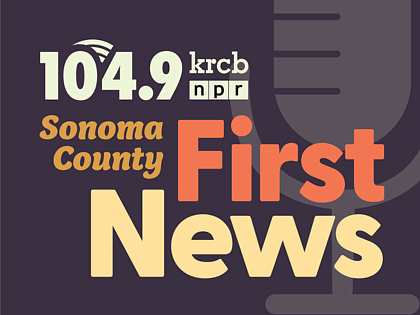to high levels of PM 2.5 contributed to about 1,000 COVID-19 deaths and 26,600 cases in counties where the smoke was found to amplify coronavirus cases or mortality. The researchers of the study, from Harvard University and other institutions, provided KQED withcounty numbersin advance of publication.
Alameda County, where Maribel Villanueva lived, faced one of the biggest spikes in COVID-19 deaths linked to wildfire smoke pollution out of the 92 counties the researchers analyzed.
Smoke increases risk of lung infections
Inhaling wildfire smoke can cause inflammation in the lungs and hurt the immune system’s response, making people more prone to severe respiratory tract infections, including from COVID-19, according to medical experts and theCenters for Disease Control and Prevention.
“It made perfect sense to me that the bad wildfire smoke season we had in 2020 here in Northern California would lead to increased risk of COVID-19,” said John Balmes, a pulmonologist at UCSF who reviewed the study for KQED.
 Susana Villanueva holds a photo of her sister Maribel at her home in Oakland on Aug. 3, 2021. Maribel, a day care worker and single mom, developed a cough after inhaling wildfire smoke in Sept. 2020. She died weeks later from COVID-19.arida Jhabvala Romero/KQED
Susana Villanueva holds a photo of her sister Maribel at her home in Oakland on Aug. 3, 2021. Maribel, a day care worker and single mom, developed a cough after inhaling wildfire smoke in Sept. 2020. She died weeks later from COVID-19.arida Jhabvala Romero/KQEDPrevious research has linked air pollution to worse COVID-19 health outcomes, including a recentstudythat found that higher PM 2.5 from wildfire smoke led to 18% more COVID-19 cases in Reno, Nevada.
But this is the first investigation that quantifies the extra number of coronavirus cases and deaths due to wildfire pollution in multiple states, said senior author Francesca Dominici, a professor of biostatistics at the Harvard T.H. Chan School of Public Health.
Dominici said the study makes a clear link between climate change and the pandemic.Climate expertshave established that the warming climate is a major driver of drought and heat conditions that lead to more frequent and catastrophic blazes.
“We now know that these wildfires, because of their very high levels of PM 2.5, are making the pandemic worse,” said Dominici. “Wildfire [smoke] exposure and COVID are actually a really dangerous combination.”
Dominici’s research team developed a statistical model that crunched county-level data on the coronavirus, smoke and PM 2.5 to estimate excess COVID-19 cases and deaths up to four weeks after a day of extra air pollution due to the blazes.
While wildfire smoke exacerbated the coronavirus health burden in most counties, the smoke seemed to have a “protective effect” leading to fewer coronavirus cases or deaths in others, including Los Angeles and San Mateo. That’s because there are many other factors at play, such as adherence to mask mandates, said Dominici.
“It's entirely possible that during wildfire days people stayed indoors more, and this contained ... the spread of the disease,” she said. “And so people were actually exposed less to the levels of PM 2.5 during these days.”
‘Like he was drowning’
Adrian Sanchez, 72, lived in South Hayward, in a lower-income ZIP code that has suffered one of the highest rates of COVID-19 deaths in Alameda County.
The former forklift operator died from the coronavirus on Dec. 5, and lived with both Type 2 diabetes and asthma — two conditions that make COVID-19 and smoke more dangerous.
His wife of 46 years, Eudelia, remembers Adrian struggling to breathe on heavy smoke days last summer and fall. He felt “like he was drowning” because of his asthma, she said in Spanish.
“It’s going to be very difficult for us to recover. The pain is always going to be there,” said Eudelia, 68, who believes the smoke pollution harmed her husband’s health.
“Obviously, if the smoke impacts people who are healthy, can you imagine what it does to those who are already sick?” she asked.
During the worst of last year’s wildfire season, between mid-August and mid-October, 162 people in Alameda County died from the coronavirus, according to an analysis of county records by theDocumenting COVID-19 projectfrom the Brown Institute for Media Innovation, a collaboration between Columbia and Stanford universities, in collaboration with KQED.
County medical examiner data, which includes the occupation of those who died, shows that nearly all of the deceased under age 65 were in frontline jobs, including janitors, delivery drivers, caregivers and construction workers.
 Susana Villanueva at home in Oakland with Maribel's son David Lara, 11. After Maribel's death last fall, Susana and her husband took custody of David.Beth LaBerge/KQED
Susana Villanueva at home in Oakland with Maribel's son David Lara, 11. After Maribel's death last fall, Susana and her husband took custody of David.Beth LaBerge/KQEDAir pollution as environmental justice issue
To protect themselves, people should avoid smoke as much as possible and wear N95 masks when they venture outdoors.
Inside buildings, using central air conditioning orair cleanerscuts down particulate matter, said Amy MacPherson, a spokesperson with the California Air Resources Board, or CARB, which is tasked with protecting the public from air pollution.
“The single most effective way to protect yourself from wildfire smoke is to stay indoors, with windows and doors shut,” said MacPherson.
But avoiding smoke is often unrealistic for millions of people who work outside the home and toil outdoors in industries such as construction or agriculture, or who rely on public transportation.
These workers often live in lower-income communities of color, in older homes that lack air purifiers and that smoke can easily penetrate, said Balmes, the UCSF physician who has researched the impacts of air pollution on lung health for nearly 40 years.
He added that those same communities, with less access to medical care or healthy foods, also suffer disproportionately from chronic conditions such as heart disease and diabetes that can worsen COVID-19 symptoms.
“Exposure to air pollution in general and wildfire smoke in particular, tends to be greater for low-income people of color, but then they're also at greater risk for COVID-19,” said Balmes. “So it's an environmental justice issue that our society should be dealing with.”
Local governments should do more to provide free N95 masks and portable air filters to lower-wage families, especially essential workers, said Balmes, who was first appointed as a member of CARB by Gov. Arnold Schwarzenegger.
The agency is planning to provide$5 millionin the next few months to local communities to upgrade ventilation systems and purchase portable air cleaners. The goal is to set up a “network of clean air centers” to help vulnerable populations get relief from the smoke, said CARB spokesperson MacPherson.
Last week, the Bay Area Air Quality Management Districtannouncedit will offer portable air filtration units to about 2,000 lower-income residents diagnosed with asthma, and who are particularly at risk from the pollution expected this wildfire season.
And abillintroduced last month by California and Oregon senators would allow the president to declare a “smoke emergency” and direct funds, equipment, personnel and other resources to set up smoke shelters, air purifiers and air monitors in affected communities.
Families of both Adrian Sanchez and Maribel Villanueva, the day care worker, said they didn’t have an air purifier at home or N95 masks to wear when they went outdoors.
After Maribel’s funeral, her sister Susana took custody of Maribel’s young son. The family gathered during his 11th birthday celebration at Susana’s home. But as he stared at his red velvet cake, the boy looked like he was going to cry, missing his mom, said Susana.
“I tell him, ‘I will never be able to replace your mom, but I'm here. We love you. I want you to know that we care for you,”' she said. “So just taking it one day at a time.”
Jake Kincaid and Derek Kravitz of the Documenting COVID-19 project contributed data analysis on COVID-19 deaths in Alameda County during wildfire season for this report.

 Live Radio
Live Radio




